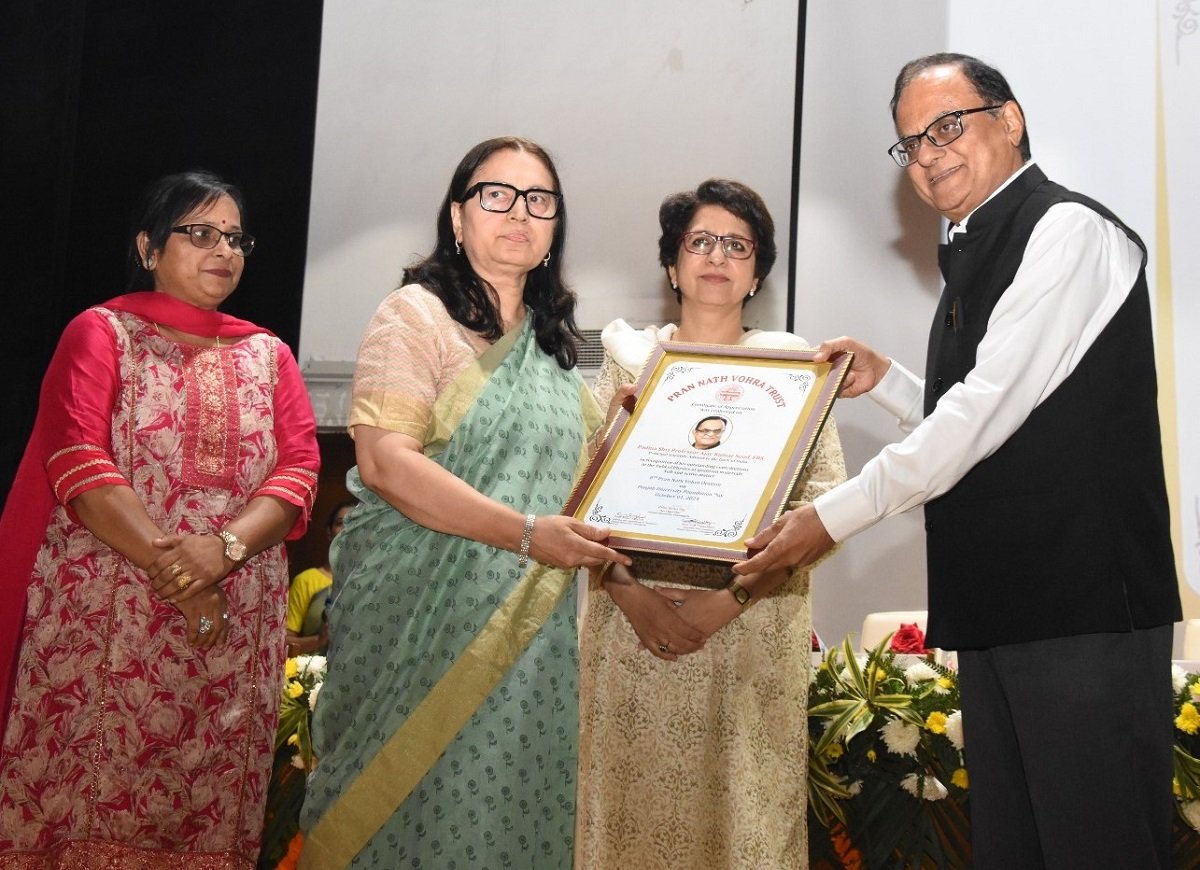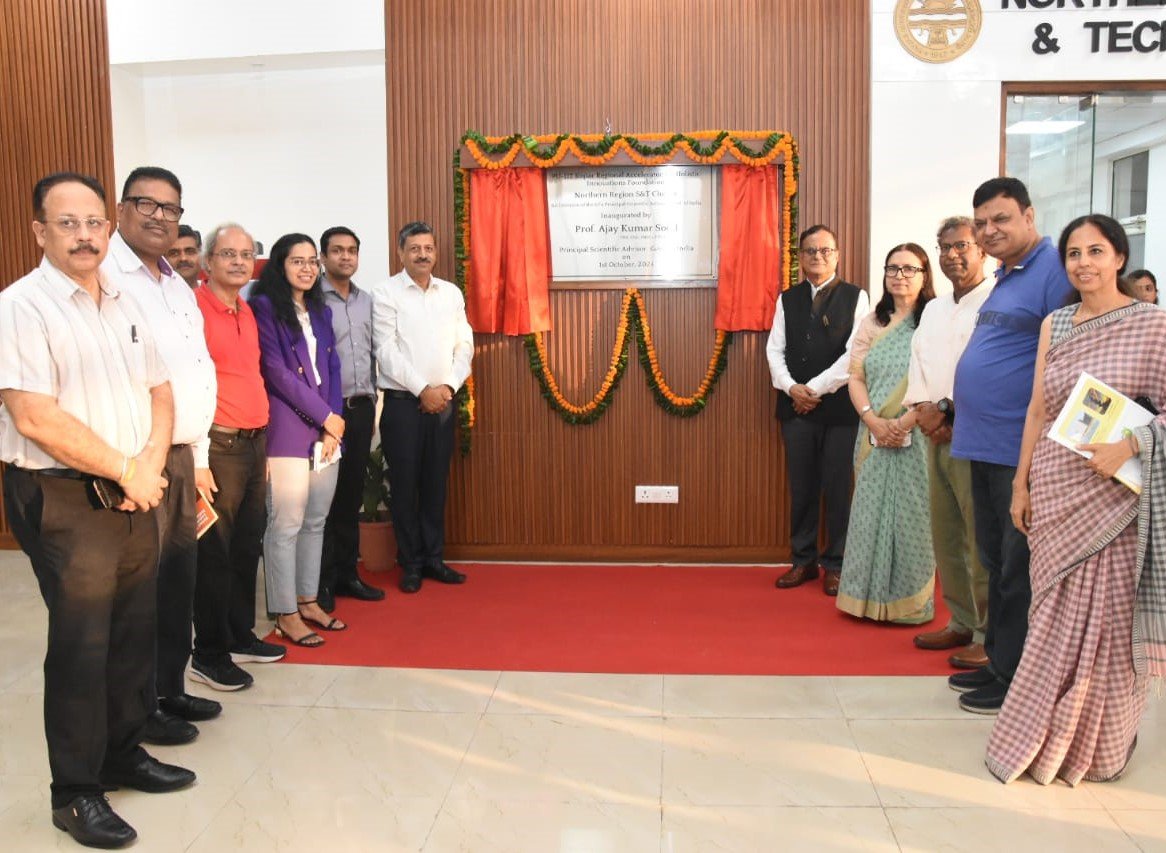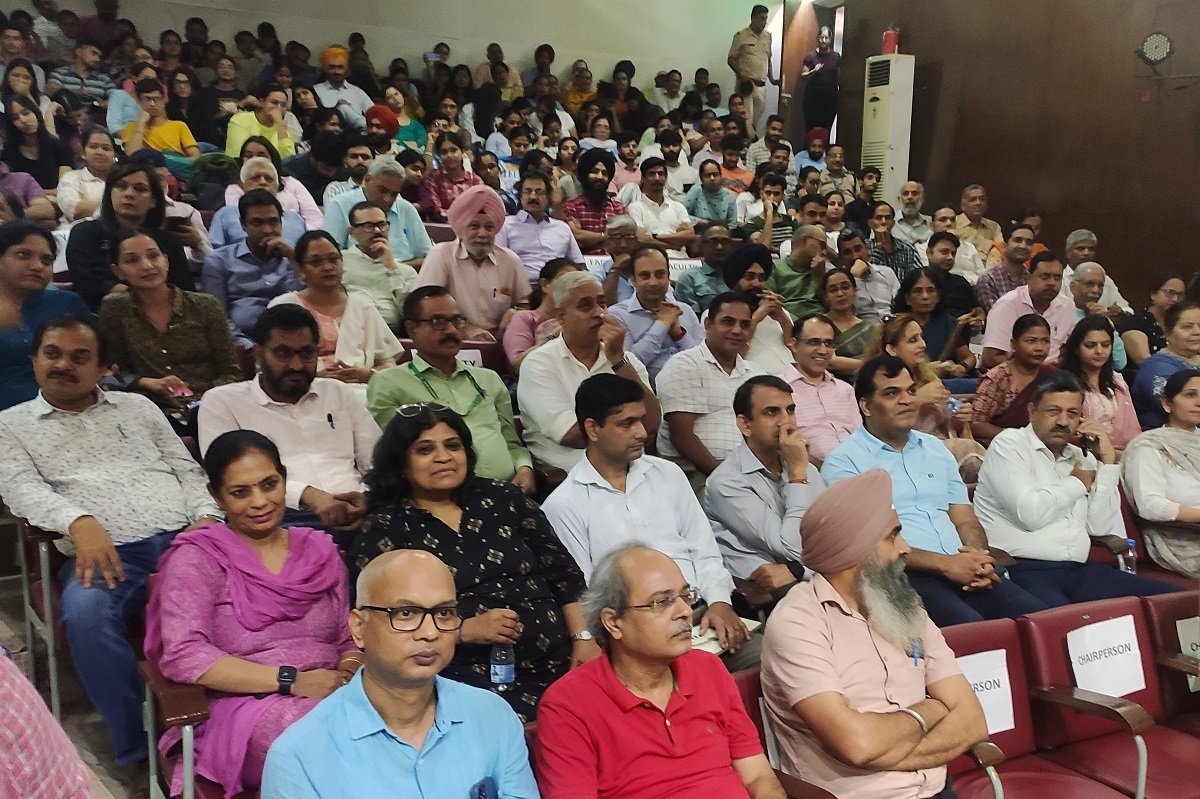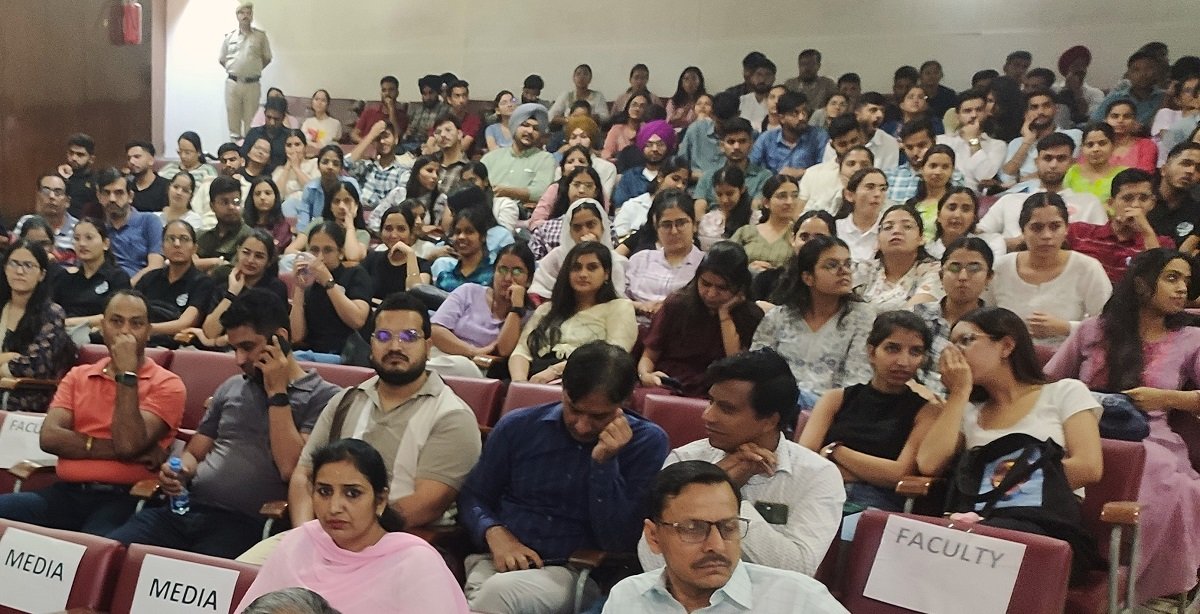Research output in the country is concentrated in a few institutions
Private sector funding of R&D in India very low as compared to leading countries
India in race for supremacy in Quantum Tech and development of generative AI
Biography of Prof Om Parkash Vig, a distinguished chemist and former Chairperson of Panjab University’s Department of Chemistry, released on his 100th birth anniversary
It’s not often that you get to hear in depth one of the bright brains in the country helping shape the scientific roadmap of the country about the challenges faced by the country and the priorities set by the government of the day to overcome these.
So, here was the man, the Principal Scientific Advisor (PSA) to the Government of India, Padma Shri Prof Ajay Kumar Sood emphasising on the need for universities and institutes of higher learning, as well as private industry, to majorly step up their research and Development (R&D) efforts to raise it to international levels.
He also shared the mission mode in which the government is working to establish the country’s supremacy in the critical fields of quantum technologies and artificial intelligence moving forward and measures undertaken to achieve the country’s target of net zero economy by the year 2070.
Prof Sood was delivering the Panjab University (PU) Foundation Day Lecture-cum-Pran Nath Vohra Oration on the topic ‘India @2030 Marching Forward: Science and Technology Space in India’ at the University Auditorium on Tuesday.
Himself an alumnus of the university, the PSA, in the presence of Vice Chancellor Prof Renu Vig, and other top brass of the university, also released a biography of Prof Om Parkash Vig, a distinguished chemist and former Chairperson of Panjab University’s Department of Chemistry, on the latter’s 100th birth anniversary.
Advertisement

The biography, chronicling Prof OP Vig’s life, achievements, and scientific contributions, has been authored jointly by Germany-based science historian Prof Rajinder Singh and Dr SS Bari, who remained associated with the distinguished chemist for four decades.
A special cover in memory of Prof Vig, released by India Post, was also unveiled on the occasion with his family members in attendance.
While noting the significant strides made by the country in the R&D domain in terms of infrastructure as well as outcomes, Prof Sood also listed out areas where India is lagging the advanced countries and needs to catch up fast.
India’s R&D growth story

Among the achievements, Prof Sood mentioned India’s vastly improved ranking in Global Innovation Index, rapidly increasing Gross Expenditure on R&D, tripling the number of publications, third rank in PhDs in Science & Technology as well as patents granted, and world’s third largest startup ecosystem.
Stressing on the growth story of higher education in India, he shared that the number of universities in the country have grown from 827 to 1305, institutes of national importance from 75 to 158, and total PhD enrolments from 1.17 lakh to 2.13 lakh. He said it is gratifying to note that female PhD enrolments have also more than doubled from 48,000 to 99,000.
In the QS World University Ranking 2025, 11 Indian institutions have found a place in the top 500 worldwide and two of them have been ranked in the top 150 – IIT Bombay (118 rank) and IIT Delhi (150 rank), he pointed out.
Still country lagging leading countries

The PSA however admitted that despite India’s growth story in R&D, it was lagging leading countries with gross R&D expenditure as percentage of GDP at a low of 0.64%, compared to China, Finland, Japan, South Korea, and USA which are spending in the region of 2-4% of their GDP on R&D.
In terms of full-time R&D personnel per million population also India with 262 researchers stands nowhere near China, USA, Japan, Finland, and South Korea, the last country having an astronomical ratio of 9000.
Sharing glaring data based on NIRF: India Rankings 2024, he highlighted that research output in the country is concentrated in a few institutions.
According to the data, the number of most productive institutions as per laid down parameters is only 18 (with average publications per institution of 7620), medium productive institutions are 47 (Av publications 2839), low productive institutions 108 (Av publications 1236), and least productive institutions 115 (Av publications 1121).
Institutions with zero publications

Revealing that there are 80 universities and institutions of higher learning with zero publications, he said the situation is worrisome and the country will have to ensure that the R&D infrastructure and ecosystem is evenly distributed across institutions.
While the private industry in the leading countries is contributing a lion’s share of R&D funding, the Indian private industry’s contribution is only 36.4%, the rest being funded by the government. In comparison the private sector’s funding of R&D effort in South Korea is 79.1%, Japan (78.6), USA (77.6), China (76.9), UK (70.9), Germany (66.9) and France (65.7%), Prof Sood added.
He said the private sector in the country will have to be motivated to invest more in R&D to accelerate the pace of development in the country.
Dwelling on another significant parameter – Human Development Index, which takes into account education, health and living standards – he said here again India, currently with an index of 0.645, has to step up and move from the medium category to the world average high category index of between 0.700-0.799.
While emphasising that a lot of work is being undertaken to carry forward various national missions like One Health Mission, Electric Vehicles Mission, Green Hydrogen Mission and AGNII (Accelerating Growth of New India’s Innovation), he delved deep into two missions in which the country is aspiring to lead the world – the National Quantum Mission and the Artificial Intelligence Mission.
Race for supremacy in quantum tech
Giving reasons why India, like many other leading nations, is in the race for supremacy in quantum computing space, he said it is a critical area for ensuring national security. If your adversary has quantum computers, and you don’t, then the security of all your digitally operated national grids, which work of encrypted communication networks, face the threat of being compromised and the country can collapse.
Sharing that the country is investing heavily in quantum computing, he listed out the technology’s immense long-term potential in crucial areas like drug designing and precise climate predictions.
Generative AI
Another area of deep focus, Prof Sood said is development of Artificial Intelligence (AI). Despite its various pitfalls, AI is here to stay, and no country can afford to be left behind in the field, which has progressed to generative AI.
However, he emphasised that India should create its own large language models (LLMs) for AI applications, which should be trained on our own data, and not depend on data from Europe or the US, which can be biased.
Among the seven pillars of the new AI mission launched by the Indian government are compute capacity, which is very large; applications development; startup financing; establishing innovation centres; and safe and trusted AI, Prof Sood stated.







